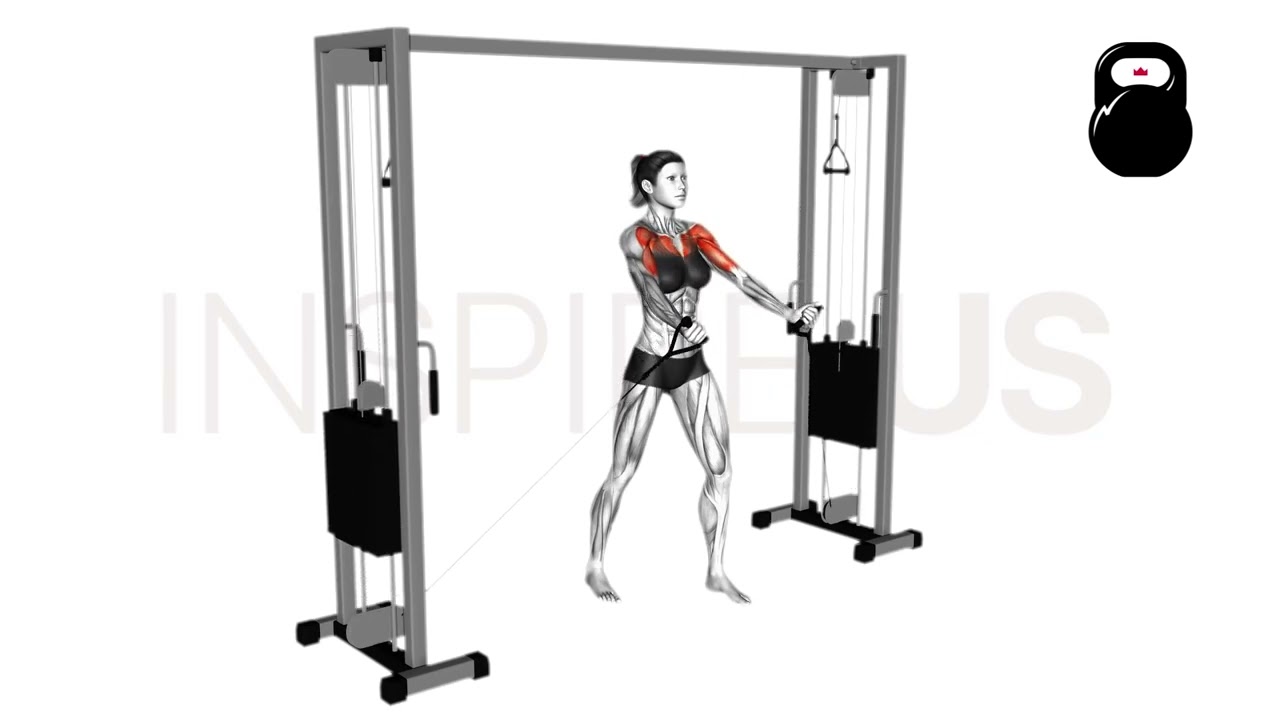Low to High Cable Chest Flys: Muscles Worked, and More
The low cable chest fly is a variation of cable fly where the pulleys are set close to the ground, improving contraction of the lower section of the pectoralis major while also reducing comparative strain on the shoulders.
What are Low Cable Chest Flys?
Low cable chest flys are a machine-based isolation exercise where the lifter performs arm adduction against resistance angled diagonally behind their body.
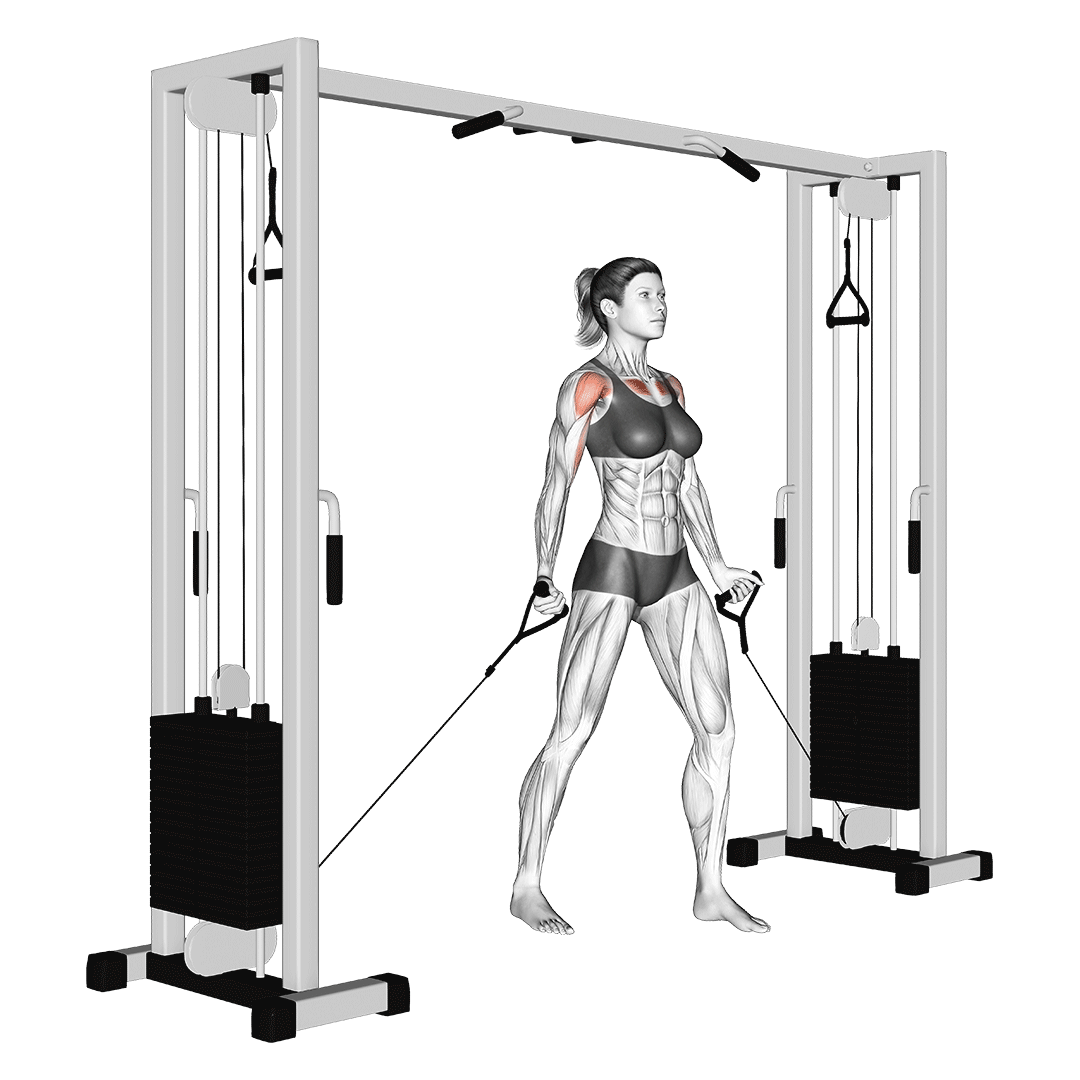
To perform the exercise correctly, a dual tower cable machine with a pair of D handles will be needed. While it is possible to perform the exercise with only one tower, doing so can be time consuming and difficult to stabilize.
In actual practice, the low cable fly is most often used as an accessory exercise for maximizing chest hypertrophy - usually with a focus on completing a large range of motion for high volume sets.
The low cable chest fly is best performed in an upright position with the legs staggered for greater stability, but you may also perform the movement seated if standing is not an option.
How to Do Low Cable Flys
To perform a repetition of the low cable fly, the lifter will begin by first setting the cable pulleys as low as possible before grabbing the handles and stepping forwards so that the cable is angled diagonally behind them.
Arms now held out to the sides with the elbows slightly bent, the lifter pushes their chest out, fixes their head over their body and ensures their torso is either vertical or bent slightly forwards, shoulders rotated neutral.
With the body now positioned correctly, the lifter simply squeezes their pectoral muscles and draws their hands towards the front of their body, elbows still bent.
Once the hands are nearly touching at the front of the torso (and the chest has reached a full ROM), the lifter then allows the resistance of the cable to draw their arms back out to the sides in a slow and controlled manner.
Arms now back in the original starting position, the repetition is considered to be complete.
Because of the angle of resistance involved, lifters may feel some level of contraction in their biceps near the distal end of the movement. Avoid curling the handles, aiming to instead draw the arms around through pure chest muscle contraction alone.
Sets and Reps Recommendation:
As is commonplace with chest isolation exercises, aim for a lesser amount of weight and greater emphasis on time under tension, a full range of motion and higher amounts of volume.
3-4 sets of 8-16 repetitions is considered a generally good volume range for most lifters.
What Muscles are Worked by Low Cable Chest Flys?
The low cable chest fly is an isolation exercise, meaning it only truly targets a single muscle group - that, of course, being the pectoral muscles that encompasses the chest.
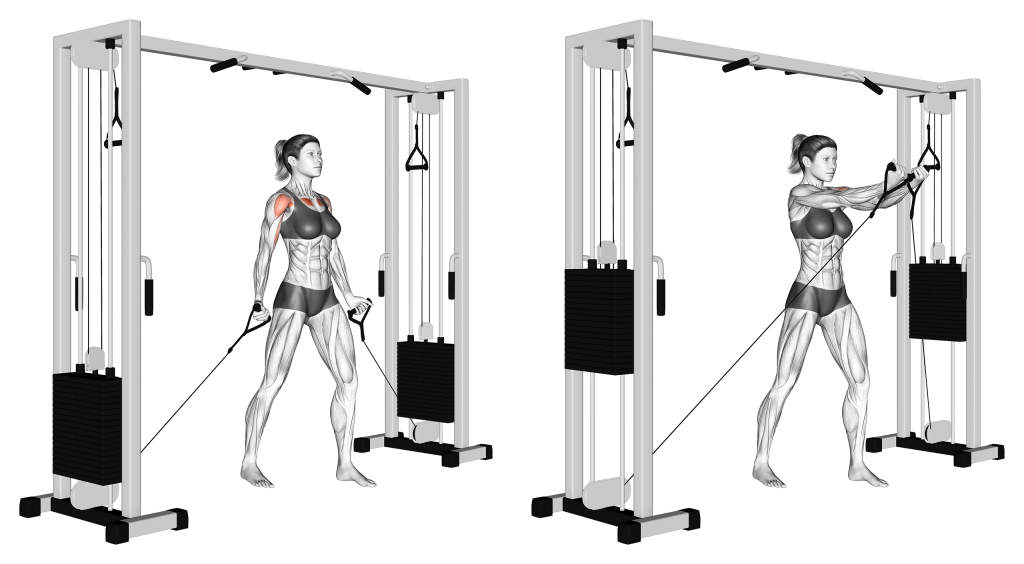
To be more specific, the low position of the pulleys and subsequent angle of the cables causes the lower section of the pectoralis major muscle to be emphasized to a far more significant degree.
This exact muscle is known as the sternal head, and is the largest section of the overall pectoralis major itself.
Because the cable chest fly primarily relies on arm adduction as its main mechanic, the sternal head of the pectoralis major will work in concert with the clavicular head (also of the pec major) and the requisite pectoralis minor.
Common Low Cable Chest Fly Mistakes to Avoid
Although one of the safest chest exercises one can do, the following mistakes can lead to overuse injuries or simply poor training response within the pectorals. Correct them if present.
Poor Range of Motion
The biggest mistake to avoid when performing low cable chest flys is an insufficient range of motion.
With such a small scope of recruitment, it is especially vital to ensure that each repetition starts and ends with the upper arms raised laterally outwards, pectoral muscles stretched out as much as possible.
In addition to always reaching the correct start and end point, the top of the repetition must also involve the upper arms rotated to the front of the torso, nearly touching as the pectoral muscles are concentrically contracted fully.
An insufficient range of motion can lead to not only poor muscular development, but the development of weak points, sticking points and joint strain if combined with particularly high volume or a similarly poor tempo.
Rapid Tempo
In order to ensure the pectoral muscles are subjected to a sufficient length of time under tension (in the best position), a slow tempo should be prioritized.
Lifters should aim to stretch out the length of each repetition for as long as four seconds if needed, leaning more towards a lengthy and controlled eccentric phase over a concentric one.
Performing the movement too quickly can lead to the shoulder and elbow joints absorbing more force than necessarily needed, resulting in not only less mass development but also a risk of chronic overuse injuries.
Incorrect Torso Angle
For a more optimal angle of resistance and greater pectoral force output, the lifter’s torso should not be angled excessively forwards. Not only does doing so potentially strain the lower back, but may also shift emphasis away from the chest muscles in favor of the biceps brachii or deltoids.
An ideal low cable chest fly will involve either a completely vertical torso orientation - or one bent slightly forwards for greater pectoral muscle recruitment.
Body Positioned Too Close to Pulleys
Much like using an ideal torso angle, the lifter’s position within the machine should also be optimized for greater results.
Standing too close to the pulleys by either remaining failing to step forwards or biasing towards one tower can reduce tension in the cable - as well as create an angle of resistance parallel to the body, rather than behind it.
To contract the pectoral muscles more effectively, the resistance should be pulling the arms directly behind the body, even at the start of the repetition. For the majority of machines, this will require first gripping both handles before taking 1-2 steps forwards from the centerpoint of both towers.
Flaring Elbows
In order to ensure no shoulder strain is present, lifters should avoid raising their elbows directly out to the sides or otherwise positioning the upper arms above the shoulders.
Both positions involve a disadvantageous angle of the humerus bones within the joints of the shoulders, leading to greater torsion and irritation.
Apart from bending the elbows as little as possible (while still preventing fully locking them out), the lifter must also aim to keep their upper arms below parallel to the shoulders.
Internally Rotated Shoulders or a Hunched Upper Back
As a catch-all as far as upper trunk positioning is concerned, the low cable chest fly should involve the chest being pushed out with the scapula in a neutral position.
Rotating the shoulders internally, protracting the scapula or hunching the upper back forwards can all lead to increased strain on the spine and shoulder joints. If repeated over the course of multiple training sessions, such mistakes can lead to tendinopathy, pain and even tears.
Variations and Alternatives of the Low Cable Pec Fly
For a similar form of chest isolation exercise, the following alternative exercises or cable fly variations are worth a look. Each targets the pectoral muscles in a similar range and offers nearly identical benefits, even without the same inherent disadvantages.
Pec Deck Machine
If seeking a more fixed movement pattern or reduced elbow strain, swapping out cable flys with the pec deck machine may be your best bet.
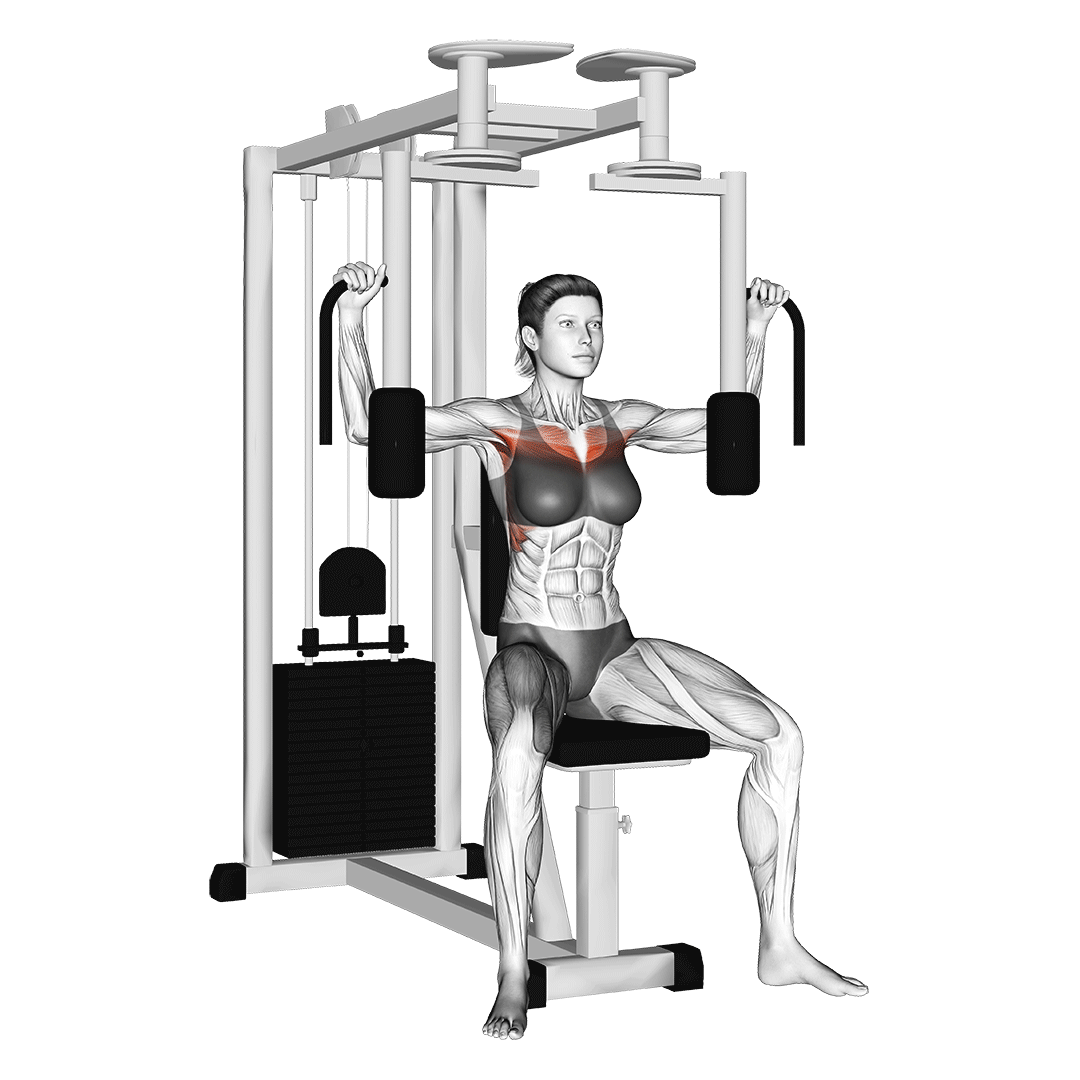
The pec deck machine involves a seated position and a more evenly distributed level of recruitment across the entire pectoralis major and minor muscle group. In all other aspects (safety, range of motion, intensity), the exercise remains practically identical to the low cable fly.
Lying Cable Chest Flys
For greater trunk support or even greater isolation of the chest, the low cable pec fly can be performed while in a lying position instead.
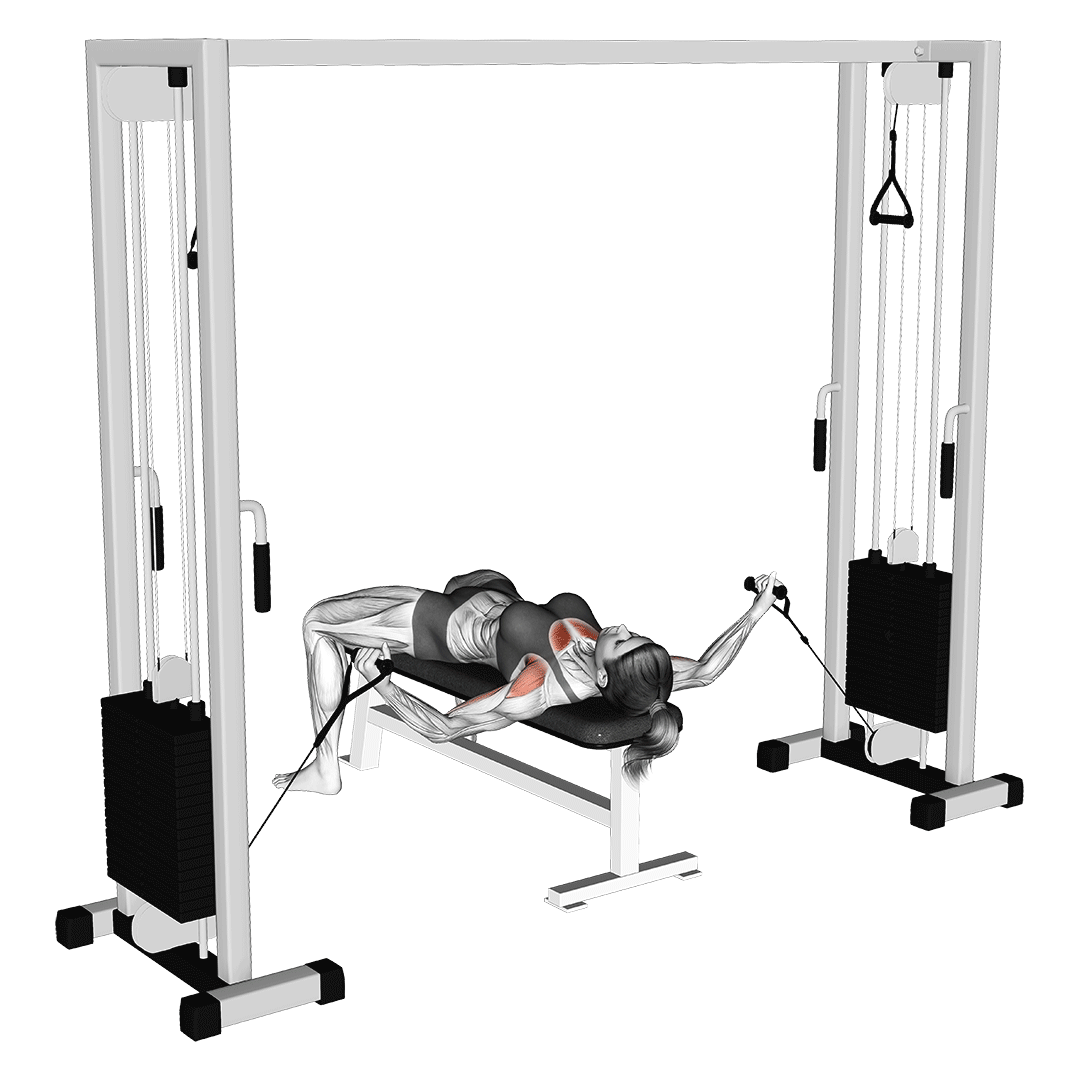
To do so, simply slide a flat bench between the two cable towers, lying atop it with the scapula retracted and both handles held out to either side. The movement may then be performed as normal.
Apart from greater stability, support and isolation, performing cable chest flys in a lying position also helps maintain strict form when near the point of muscular fatigue, as the lower body cannot aid with the movement whatsoever.
Decline Bench Dumbbell Flys
If no cable machine is available, lifters can easily recreate the muscular recruitment and movement pattern of the low cable fly with a decline bench and a pair of dumbbells.
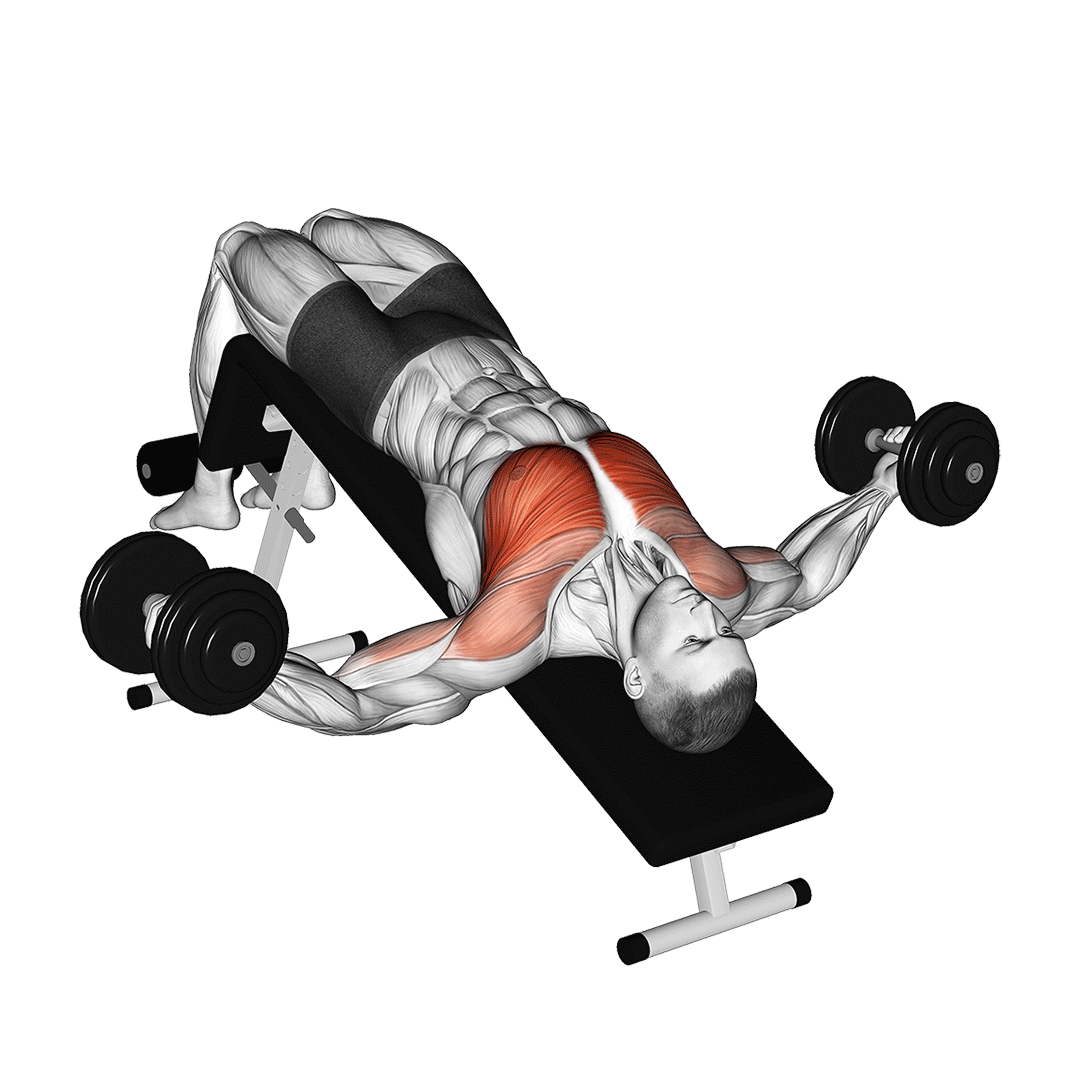
Although somewhat more intense and less convenient as a whole, the decline dumbbell fly features a similar emphasis on the sternal head of the pectoralis major and will largely replicate the same range of motion.
If substituting low cable chest flys with decline dumbbell flys, remember to retract the shoulder blades beneath the torso and to adopt a steep enough decline angle to recreate the same angle of resistance.
Frequently Asked Questions (FAQ)
Are Cable Chest Flys Worth it?
Absolutely. If performed with proper technique, cable chest flys can pack on significant muscle mass in the pectorals for a relatively low level of injury risk or fatigue.
Of course, if multiple exercises already targeting the chest are present in your training, consider limiting overall volume or using cable chest flys as a substitute, rather than adding them on top of an already full load of exercises.
What is the Difference Between a High Cable Fly and a Low Cable Fly?
The difference is exactly as it sounds; with a high cable fly, the pulleys are set high above the body, whereas a low fly involves the pulleys near the floor.
A high cable fly better emphasizes the clavicular head of the pectoralis major and the pectoralis minor muscle, whereas a low cable fly better targets the sternal or lower head.
What Cable Workout Works the Lower Chest?
Apart from low cable chest flys, lifters can try the cable crossover, the high to low cable fly or the straight arm cable front raise.
References
1. Schütz, Pascal, Pia Zimmer, Fabian Zeidler, Michael Plüss, Katja Oberhofer, Renate List, and Silvio Rene Lorenzetti. 2022. "Chest Exercises: Movement and Loading of Shoulder, Elbow and Wrist Joints" Sports 10, no. 2: 19. https://doi.org/10.3390/sports10020019
2. Peltonen, H.; Arokoski, J.; Kallinen, M.; Pullinen, T. Muscle loading and activation of the shoulder joint during humeral external rotation by pulley and variable resistance. J. Electromyogr. Kinesiol. 2012, 22, 424–430.

